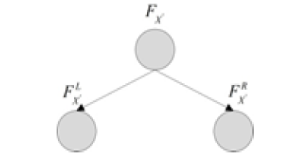


Indian Journal of Science and Technology
Year: 2020, Volume: 13, Issue: 29, Pages: 2981-3001
Original Article
Bighnaraj Naik1*, Pandit Byomakesha Dash1, Janmenjoy Nayak2
1Veer Surendra Sai University of Technology (Formerly UCE Burla), Burla, Sambalpur,768018, Odisha, India. Tel.: +91-7978568017
2Aditya Institute of Technology and Management, K. Kotturu, Tekkali, Srikakulam, Andhra Pradesh, India. Tel.: 532201
*Corresponding Author
Tel: +91-7978568017
Email: [email protected]
Received Date:07 June 2020, Accepted Date:05 July 2020, Published Date:11 August 2020
Background/Objectives: In socio-economic factor analysis, the observed data are essential in the random distribution for the adequate representation of the random components associated with various factors and lead to poor prediction in the case of the Logit and Probit model. The objective of this work is to have machine learning based model for socio-economic factors analysis and ensemble learning based model for efficient prediction of agricultural productivity. Methods: In this work, extra-tree classifier machine learning model based socio-economic factors selection has been used and found capable to evaluate the socio-economic factors that contain relevant information to the target variable agricultural productivity. In addition to this, the multi-class adaptive boosting ensemble learning approach is used for the prediction of agricultural productivity of respondents (farmers) from their socio-economic profiles. This proposed research has been evaluated by using the test case of analyzing the socio-economic factors of the farmers affecting agricultural productivity in Sambalpur District, of Odisha State, India.The farmers’ socio-economic data are collected by using structured interviews through questionnaires that are in line with standard Participatory Rural Appraisal. Findings: It is found that the proposed approach of socio-economic factor identification is efficient for computing the relationships between socioeconomic factors and agricultural productivity. Novelty: In this application domain of socio-economic factor analysis, the proposed method employs extra-tree classifier and boosting ensemble learning for socio-economic factor analysis towards agricultural productivity which is found efficient than other existing approaches such as Logit, Probit, Linear Regression, Linear Discriminant Analysis, Naïve Baise, and other counterparts.
Keywords: Socio-economic factor analysis; multiclass adaptive boosting; ensemble learning; extra-tree classifier; Probit; Logit
© 2020 Naik et al.This is an open-access article distributed under the terms of the Creative Commons Attribution License, which permits unrestricted use, distribution, and reproduction in any medium, provided the original author and source are credited. Published By Indian Society for Education and Environment (iSee).
Subscribe now for latest articles and news.